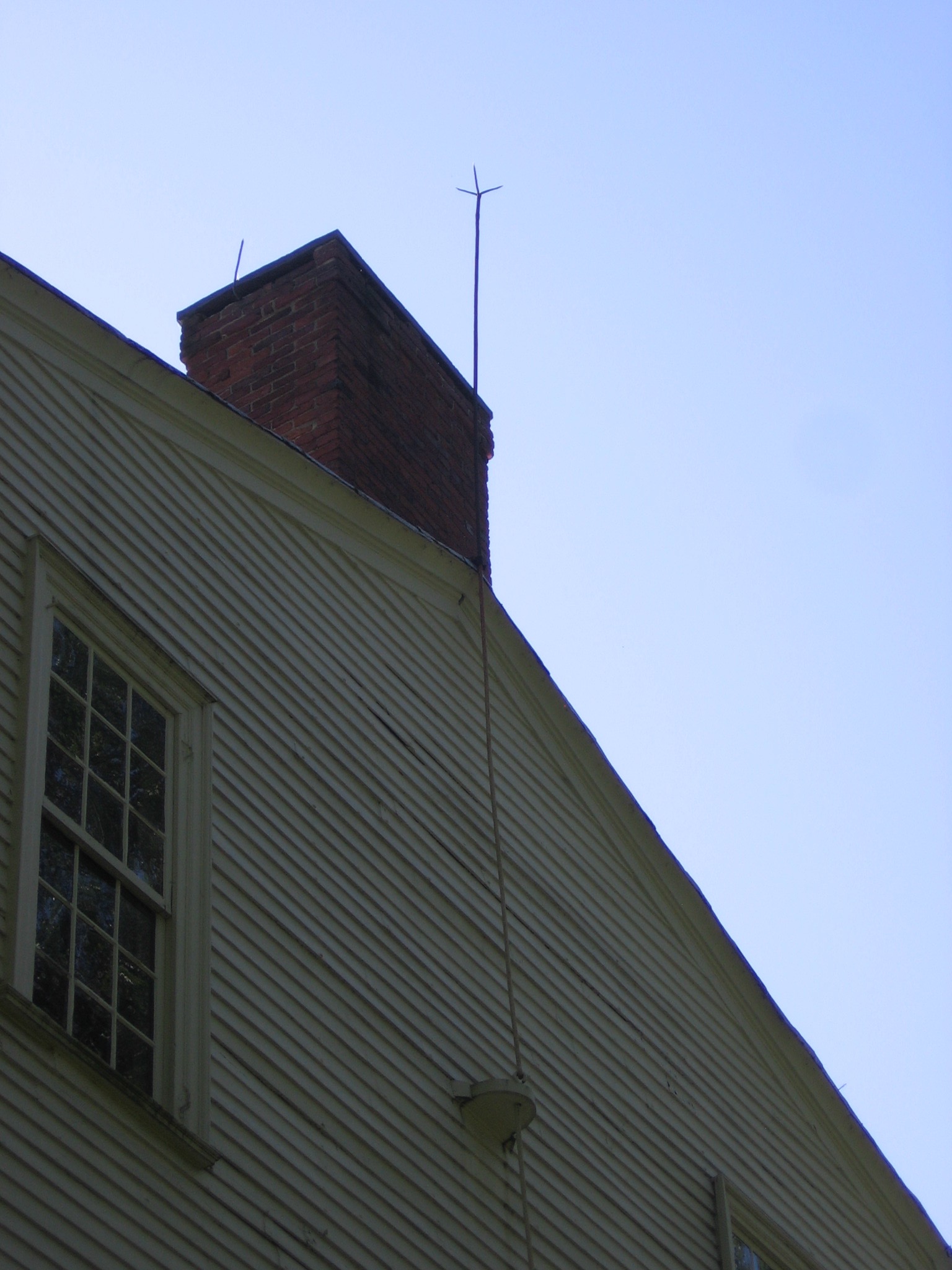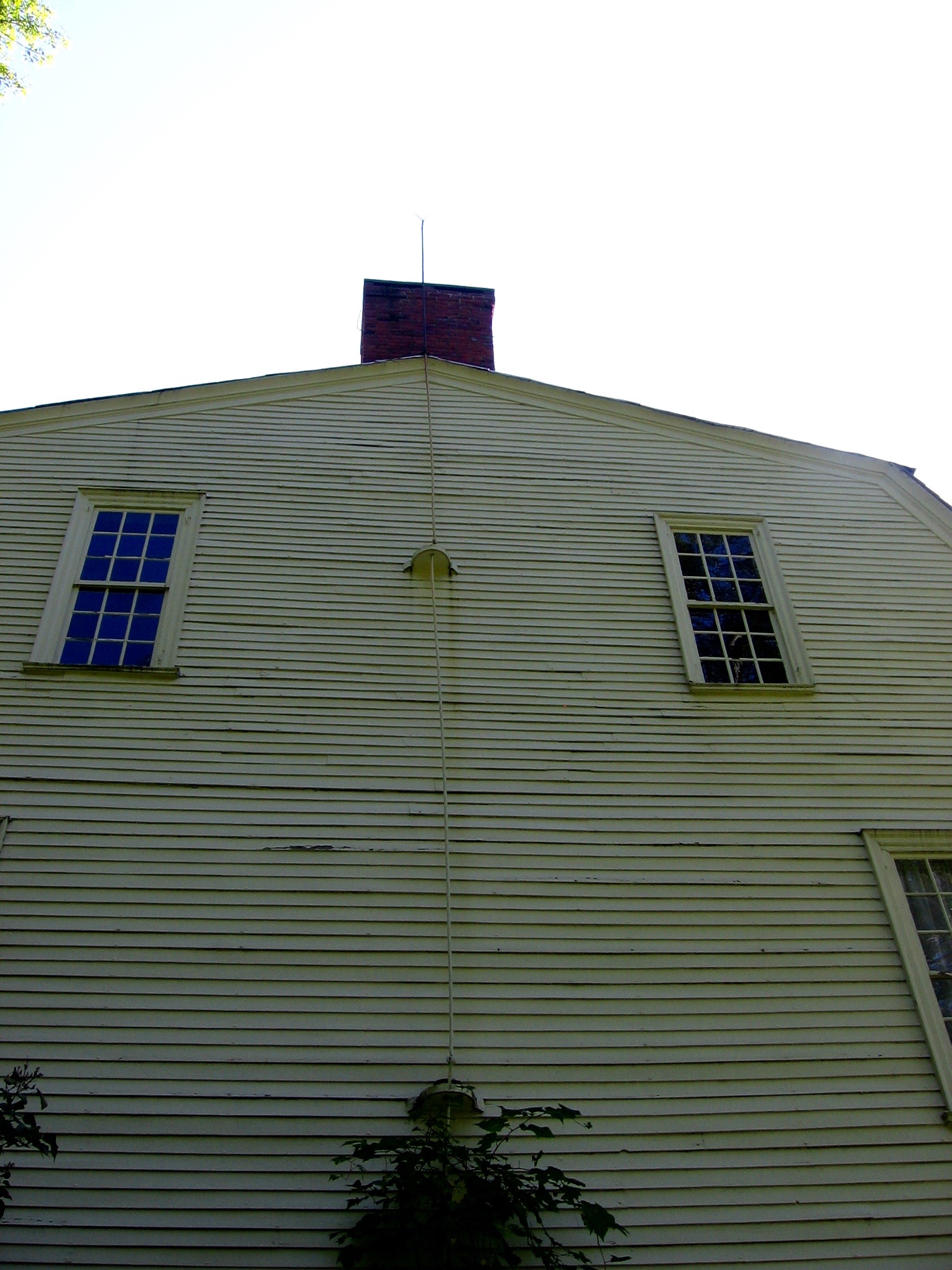Franklin Lightning Rod: More that just safety?
Running from the ground, up along the north facade and perched on top the gambrel roof is a lightning rod, said to be added during the house's 1799 renovation by Charles Phelps. In the 1920s, engineers coming to the house from the Underwriters Laboratory of Chicago were profoundly impressed by it and stated it must be one of the first true Franklin Rods. They dated it back as early as 1800 or before. The structure is unique in that it holds 3 pointed prongs at the top rather then the usual two. In 1750, Benjamin Franklin created the lightning rod to protect people, buildings, and other structures from the lightning he had recently discovered as electricity. The idea was that the rod would catch the electricity and the wire would safely conduct it past the house, down into the ground, preventing fires.
Franklin advocated for lightning rods that had sharp points whereas his English colleagues, reasoning that sharp points would attract lightning and increase the risk of strikes, thought blunt rods were more favorable. When word of the lightning rods hit the colonies the decision on wether or not to equip a building with one became a political statement. The pointed rods—like those on the Porter-Phelps-Huntington Museum—expressed support for Franklin’s theories of protecting public buildings as well as the rejection of theories supported by the king who had his house equipped with blunt rods.
The pointed lightning rod soon became a symbol of ingenuity and independence of a young, thriving nation. The family is well known for their progressive thought through the generations. This pieces adds not only historic value to the house but a look at the political statements being taken at the time of the Porter-Phelps family and their involvement.
To find out more about Benjamin Franklin and the development of the Lightning rod visit The Franklin Institute:
https://www.fi.edu/history-resources/franklins-lightning-rod
To learn about the other house renovations taking place at the time the lighting rod was added, take a look at "Forty Acres: The Story of the Bishop Huntington House" written by James Lincoln Huntington himself! Also available for purchase at the museum!


